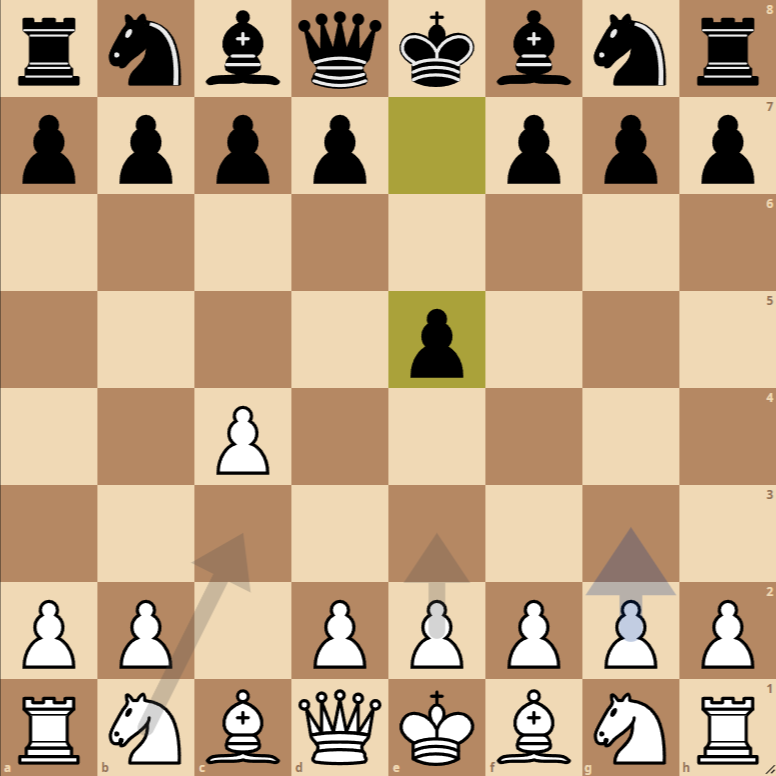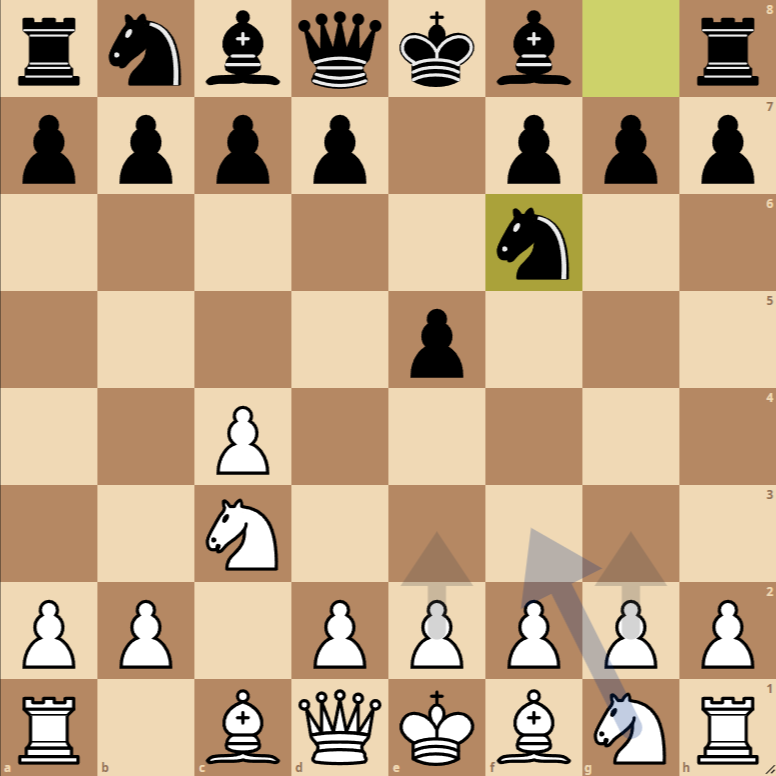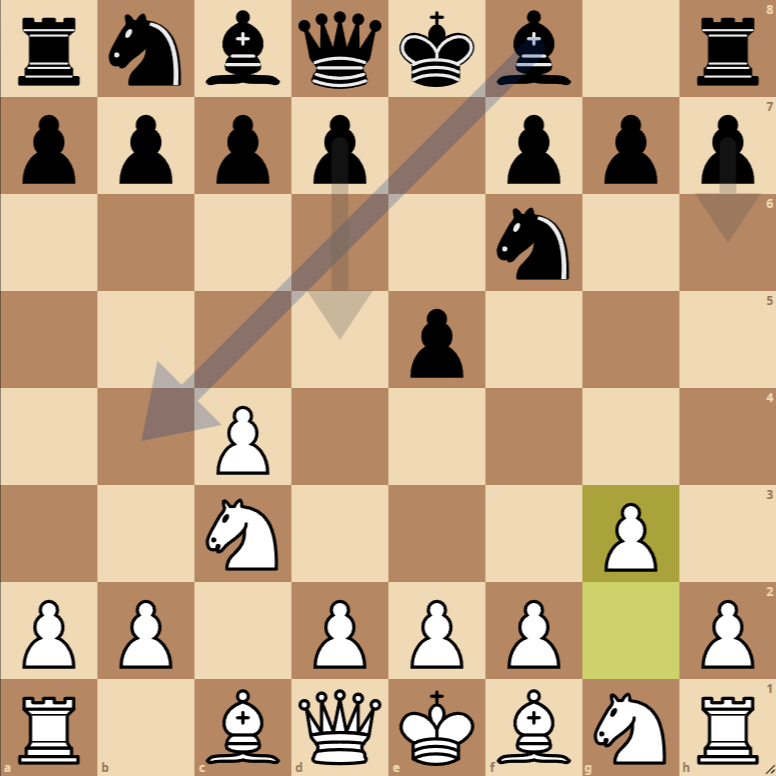How to Play the English Opening: Carls-Bremen System


- 1. c4: White begins by moving the pawn from the c-file to c4. This move aims to control the center of the board and prepare for piece development, especially the white-square bishop.
- 1… e5: Black responds by occupying the center with the e5 pawn, challenging White’s control, and preparing for piece development.
- 2. Nc3: White develops the knight to c3, supporting the c4 pawn and exerting pressure on the center, particularly the d5 square.
- 2… Nf6: Black develops their knight to f6, a classic move that puts pressure on the e4 pawn and prepares the possibility of playing d5 to open the center.
- 3. g3: White prepares to fianchetto the white-square bishop. This move follows the strategy of long-distance center control, maintaining a flexible approach in the opening.
Variations of the English Opening: Carls-Bremen System
Variation 1: 3… d5
Black plays d5, aiming to open up the center and free their pieces, especially the black-square bishop. This variation leads to a more dynamic and open game.
Variation 2: 3… Nc5
Black develops their knight to c5, a more positional move that seeks to exert pressure on the center and prepare moves like c6 or d6 to solidify their pawn structure in the center.
Variation 3: 3… c6
With c6, Black prepares to advance d5 in the near future, strengthening their control of the center. This move also sets up the development of the black-square bishop, possibly via a fianchetto.

